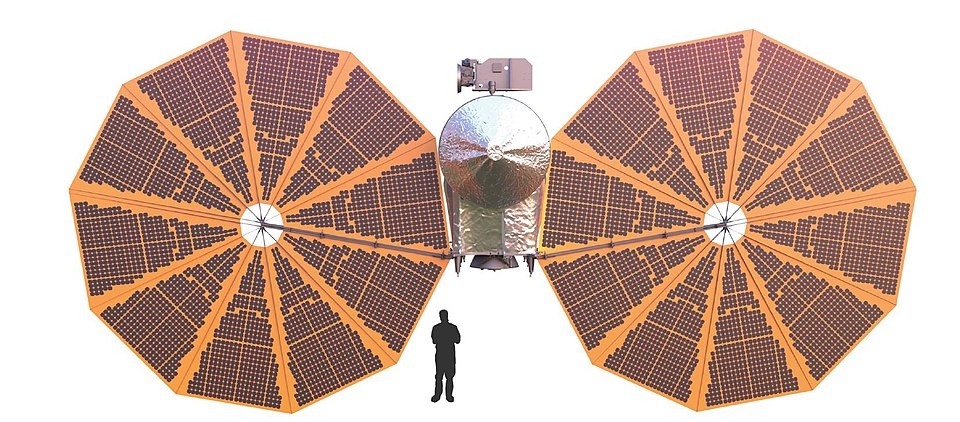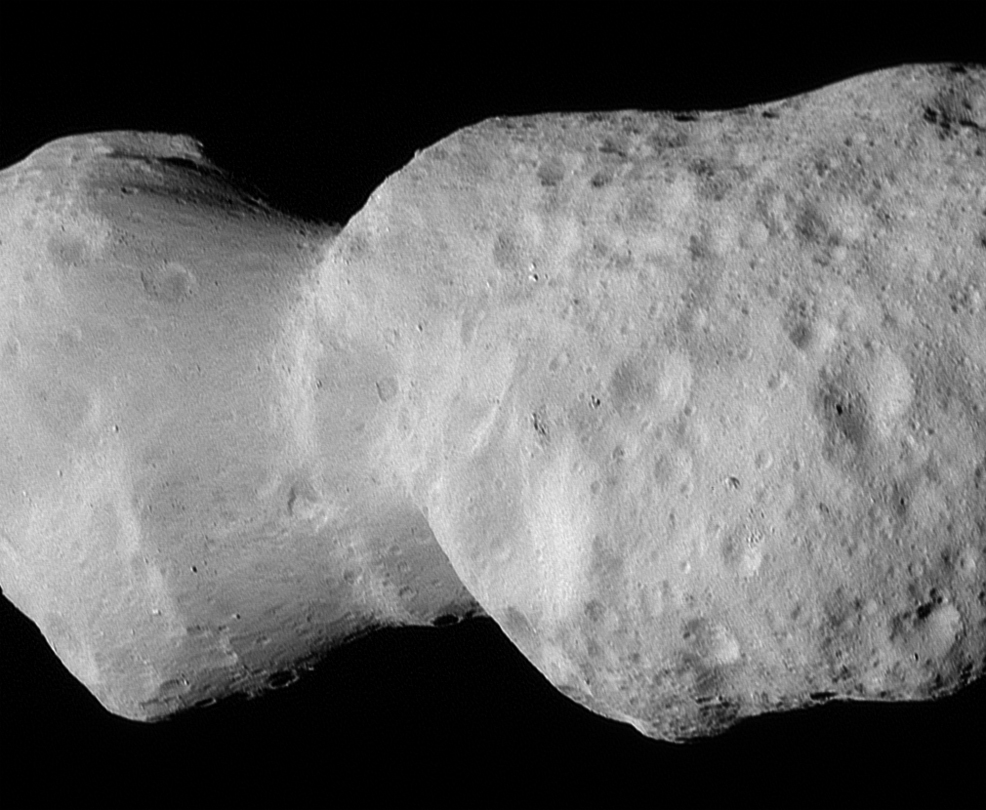
23rd April 2025 Lucy spacecraft reveals peanut-shaped asteroid NASA's Lucy mission has returned striking images of the main belt asteroid Donaldjohanson, revealing it to be larger than originally estimated and a contact binary. The spacecraft will pass by eight other asteroids between now and 2033.
NASA's Lucy spacecraft has captured detailed images of asteroid Donaldjohanson during a close flyby, revealing a peanut-shaped body larger than anticipated. This encounter occurred on 20th April 2025, with Lucy passing approximately 600 miles (960 kilometres) from the asteroid at a speed exceeding 30,000 mph (48,000 km/h). Initial observations of Donaldjohanson had suggested a length of approximately 2.5 miles (4 kilometres). However, Lucy's images now confirm it actually spans twice that original estimate, at roughly 5 miles (8 kilometres) long and 2.2 miles (3.5 kilometres) wide at its broadest point. The distinctive shape of the asteroid makes it what astronomers term a "contact binary", formed when two celestial bodies merge gently, creating a narrow "neck" between two lobes. This structure is reminiscent of the distant Kuiper Belt object Arrokoth, visited by NASA's New Horizons mission in 2019. Donaldjohanson resides in the main asteroid belt between Mars and Jupiter, approximately 139 million miles (223 million kilometres) from Earth, orbiting the Sun every 3.7 years. It's believed to be a fragment resulting from a major collision around 150 million years ago.
Size comparison of Lucy and a human. Credit: NASA
Lucy, launched in October 2021, aims to study a total of 11 asteroids during its 12-year mission, providing insights into the early Solar System. The spacecraft has already delivered surprises. In addition to revealing the unusual shape and true size of Donaldjohanson, it also discovered that the small asteroid Dinkinesh is actually a binary system – two bodies orbiting each other – during its first flyby in November 2023. "These early images of Donaldjohanson are once again showing the tremendous capabilities of the Lucy spacecraft as an engine of discovery," said Tom Statler, program scientist for the Lucy mission at NASA Headquarters in Washington. "The potential to really open a new window into the history of our Solar System when Lucy gets to the Trojan asteroids is immense." "Asteroid Donaldjohanson has strikingly complicated geology," said Hal Levison, principal investigator for Lucy at Southwest Research Institute, Boulder, Colorado. "As we study the complex structures in detail, they will reveal important information about the building blocks and collisional processes that formed the planets in our Solar System." The spacecraft's next major target is the Jupiter Trojan asteroid Eurybates and its small satellite Queta, with a planned flyby in August 2027. After several additional encounters, Lucy will make its final rendezvous in March 2033, passing the large binary asteroids Patroclus and Menoetius – each more than 62 miles (100 kilometres) in diameter. This month's flyby serves as a crucial rehearsal for Lucy's upcoming encounters with the Trojan asteroids, helping scientists refine navigation and data collection techniques for future studies.
Comments »
If you enjoyed this article, please consider sharing it:
|
||||||








